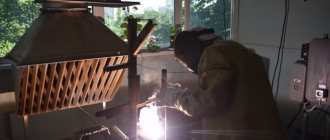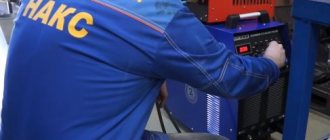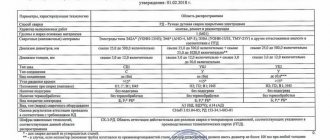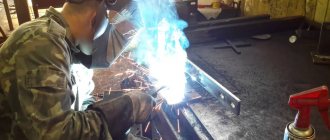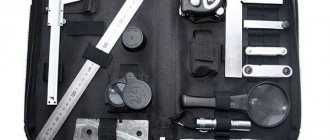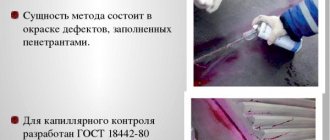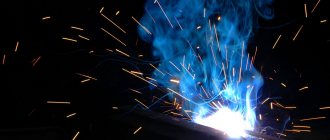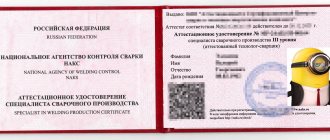Cost of work: from 17,000 rubles. Certification period: 5 working days.
The easiest and most accurate way to determine the professional training of your laboratory employees is when they pass the VIC certification. If a number of your specialists have permission to perform certain important work, then VIC certification will help to quickly confirm their qualifications. Thanks to this assessment of the professionalism of employees, the business reputation of your company grows.
VIC level 2 certification involves training a specialist directly involved in diagnosing the technical condition and assembly quality (including surfaces/welds) of the main components of operating units at oil and gas industry facilities, as well as testing his professional competence.
(“ESIS”) provides services related to certification of non-destructive testing by VIC in Moscow and remotely. Our company will quickly prepare your employees for certification tests in their chosen profile using proven training methods. Once your staff has passed the visual and measurement tests, your laboratory will be able to:
- obtain a high result when checking the level of professional competence of employees;
- gain an advantage over competitors and strengthen your position in the market;
- when ensuring safety at work, be guided by the standards established in Europe;
- increase the efficiency of specialists and increase the safety of their activities, as well as increase production indicators;
- Constantly expand your customer base and establish the necessary partnerships.
Stages of control
- Incoming control carried out upon receipt of materials to determine its compliance with all established provisions of technical regulations and other documentation, as well as quality standards.
- Manufacturing of parts, assembly units and finished products.
- Preparation for assembly and welding.
- Assembling parts for welding.
- Welding.
- Performing inspection of surfacing and welded joints.
- Detection and correction of deficiencies in surfacing and connections.
- Assessment of the quality condition of welds and the material itself during the operation of the structure/technical device, including the period after the end of their service life, which is established by the manufacturer.
Visual measurement testing (VIT) is the only method in the field of NDT that is used exclusively with the help of measuring instruments. Its advantages lie in its accessibility, efficiency, information content and relatively low cost.
What do you get after certification?
VIC certification allows you to obtain a certificate that allows you to carry out inspections of intermediate workpieces, original parts, and connections. This certificate is required for people who are involved in the following production processes:
- Incoming control.
- Manufacturing, preparation for assembly, welding work of parts, assembly units, and other products.
- Carrying out welding work.
- Inspection of welding joints and directional surfaces.
- Detection and elimination of any defects on parts.
- General assessment of the condition of welds, parts, materials when used for their intended purpose, and at the end of their service life.
It is prohibited to carry out work in the field of VIC without documents. In case of any discrepancies or violations, the inspection authorities impose penalties on the institution or specialist. The “Builder’s School”, located in Moscow, will help applicants obtain a certificate. It confirms the level of qualifications and allows the specialist to occupy the appropriate position in the enterprise.
Documents required for VIC non-destructive testing certification:
- original application for primary certification of non-destructive testing NDT specialists, which is drawn up in accordance with the requirements of PB 03-440-02. The application is signed either by the manager of the company where the specialist works, or by the specialist himself, if he submits documents for certification privately;
- certificate of practical experience in NDT methods for which the candidate is certified. The certificate must be drawn up on the letterhead of the company in which the specialist works. The certificate indicates: work experience for each of the selected NDT methods, as well as a list of works according to the control method, if the employee is going to undergo certification at level II, bypassing qualification level I. The manager of the applicant company puts his signature and the seal of the organization on the certificate;
- if the candidate applies to the VIC certification center for the first time, then attach a copy of the education document;
- copy or original medical certificates The certificate must confirm that the candidate’s state of health allows him to work with visual measurement control. The certificate must contain a physician's report on the employee's general health, as well as an ophthalmologist's report, but you can provide a copy of the medical record, which indicates the results of the medical examination. The certificate is invalid without the stamp of a doctor or medical institution. The validity period of the certificate is one year from the date of its issue;
- two black and white or color photographs (3x4);
- bank document confirming payment;
- copies of qualification certificates for certification in NDT methods (if any).
This article describes the areas of certification of VIC, according to SDANK-02-2020 (instead of PB 03-440-02) - a guideline document for the certification of non-destructive testing specialists
- Boiler inspection objects: 1.1. Steam and hot water boilers. 1.2. Electric boilers. 1.3. Vessels operating under pressure above 0.07 MPa. 1.4. Steam and hot water pipelines with a working steam pressure of more than 0.07 MPa and a water temperature of more than 115°C. 1.5. Hyperbaric chambers.
- Gas supply (gas distribution) systems: 2.1. External gas pipelines. 2.1.1. External gas pipelines are steel. 2.1.2. External gas pipelines are polyethylene. 2.2. Internal gas pipelines are steel. 2.3. Parts and components, gas equipment.
- Lifting structures: 3.1. Load-lifting cranes. 3.2. Lifts (towers). 3.3. Ropeways. 3.4. Funiculars. 3.5. Escalators. 3.6. Elevators. 3.7. Pipe-laying cranes. 3.8. Loader cranes. 3.9. Lifting platforms for disabled people. 3.10. Crane tracks.
- Mining industry facilities: 4.1. Buildings and structures of surface complexes of mines, processing plants, pelletizing factories and sinter plants. 4.2. Mine lifting machines. 4.3. Mining, transport and mining equipment.
- Coal industry facilities: 5.1. Mine lifting machines. 5.2. Main ventilation fans. 5.3. Mining, transport and coal processing equipment.
- Oil and gas industry equipment: 6.1. Equipment for drilling wells. 6.2. Equipment for well operation. 6.3. Equipment for development and repair of wells. 6.4. Equipment for gas and oil pumping stations. 6.5. Gas and oil product pipelines. 6.6. Reservoirs for oil and petroleum products.
- Metallurgical industry equipment: 7.1. Metal structures of technical devices, buildings and structures. 7.2. Process gas pipelines. 7.3. Trunnions of iron carriers, steel ladles, metal-pouring ladles.
- Equipment for fire and explosion hazardous and chemically hazardous industries: 8.1. Equipment for chemical, petrochemical and oil refining plants operating under pressure up to 16 MPa. 8.2. Equipment for chemical, petrochemical and oil refining plants operating under pressure above 16 MPa. 8.3. Equipment for chemical, petrochemical and oil refining plants operating under vacuum. 8.4. Tanks for storing explosive and fire hazardous and toxic substances. 8.5. Isothermal storage facilities. 8.6. Cryogenic equipment. 8.7. Equipment for ammonia refrigeration units. 8.8. Ovens. 8.9. Compressor and pumping equipment. 8.10. Centrifuges, separators. 8.11. Tanks, containers (barrels), cylinders for explosive and fire hazardous and toxic substances. 8.12. Technological pipelines.
- Railway transport facilities: 9.1. Rolling stock and containers intended for transporting hazardous substances. 9.2. Railway sidings.
- Grain storage and processing facilities: 10.1. Blower machines (air turbocompressors, turboblowers). 10.2. Fans (centrifugal, radial, VVD). 10.3. Hammer crushers, roller machines, entolators.
- Buildings and structures (construction sites): 11.1. Metal constructions; 11.2. Concrete and reinforced concrete structures; 11.3. Stone and reinforced stone structures.
- Electrical equipment.
We will also present the main methods of non-destructive testing (in accordance with clause 1.7 PB 03-440-02)
- ultrasonic (UK);
- acoustic emission (AE);
- radiation (RK);
- magnetic (MK);
- eddy current (VC),
- penetrating substances: capillary (PVC), leak detection (PVT);
- visual and measuring ( VIK );
- vibration diagnostic (VD);
- electric (EC);
- thermal (TC)
By the way, you can undergo training in visual measurement control at our training center using distance learning technologies
Rules for certification of non-destructive testing VIC
Certification for visual measurement control of VIC (including certification of VIC level 2) has some features that need to be taken into account. The rules and procedure for certification of VIC are established in the company's Regulations related to certification of control methods. This Regulation also indicates the categories of employees who must undergo certification.
Persons not subject to certification:
- who have been working for less than a year (in total);
- pregnant women or women on maternity leave;
- in some cases, part-time workers working under a fixed-term employment contract (contract term - 1-2 years) are not subject to certification;
- within a year after their appointment, employees who took the position through a competition are not certified.
The Regulations also establish the frequency with which the certification of the VIC is carried out and with a precise indication of the start of the period (either from the moment the order is issued, or from the date specified in the order).
Why is it necessary to pass the VIC certification?
VIC in the process of incoming control is carried out when a certain material or component parts arrive at the base of the company, which will be engaged in their further use. This type of control is carried out to be completely sure that materials or parts clearly comply with all the norms and requirements of modern standards, original technical specifications, certain rules and various design documentation.
To date, VIC certification is the only type of control used without the use of special additional equipment. It is carried out using the simplest and most reliable devices. This method of measurement is the most informative and requires minimal time and money.
Certain types of technical methods for conducting VIC are available to everyone, and the control process itself is not particularly difficult. Although it belongs to modern methods of technical control, just like radiation or the original ultrasonic type of control.
Modern VIC is used to determine the quality of preparatory work and the welding process itself, establishing the overall quality of seam production.
VIC allows, using external inspection, to determine characteristic defects in welding seams that are responsible for connecting structural components. It is also required to identify defects during the manufacturing process and installation of all types of welding structures. General methods of conducting visual inspection help to detect certain changes in the shape and structure of welds that connect the structural parts of a technical device.
All welding joints made must undergo VIR, as it allows one to detect various defects and possible deformations of the seams. In addition, thanks to it, it is possible to determine the geometric dimensions and clear shapes of all welding seams, as well as the degree of permissibility of various types of deformations.
Stages of certification of non-destructive testing VIC:
- At the preparatory stage, principles and methods of certification are developed, orders for certification are issued, documents for certification and a list of employees subject to it are approved. Employees are notified of the certification.
- At the main stage, the work of the commission is organized, the certification of the VIC itself is carried out, and the results are checked.
- At the final stage, the results of certification tests are summed up, decisions are made regarding employees, and the commission is provided with certification sheets that indicate the results of the employee’s previous certification and feedback.
The tests themselves are attached to the final protocol on test results. Employees who have passed certification receive certificates of completion, which indicate the area in which they are certified. Admission to the VEC is carried out only on the basis of these documents.
Advantages and disadvantages
First, about the advantages of the visual measurement method of control:
- accessibility, you can check welded joints in the field, at the workplace;
- VIC does not require consumables;
- defects are detected during continuous production;
- you can identify seams that require deep inspection;
- the study requires a short time interval;
- the inspection can be carried out without special training; the welder can independently examine the welded joints.
Cons of VIC:
- relatively low reliability of the results;
- only external defects are detected;
- the range of defects is limited by the capabilities of the human visual apparatus;
- the results are recorded manually;
- You can only check the visible part of the seam; external inspection is carried out only from the outside of the part.
Despite the shortcomings, VIC is used everywhere, at all enterprises when assembling welded metal structures.
Laws governing certification
- Order of the Federal Service for Environmental, Technological and Nuclear Supervision No. 116 of March 25, 2014
- Technological standard RD 08.00-60.30.00-KTN-046-1-05.
You may also be interested in information about the necessary documentation for processing all documents that are included in the list of our services
Certification in Rostechnadzor for industrial safety
Certification of designers in Rostekhsnadzor
Certification in the field of non-destructive testing
Tools for visual inspection
A list of tools used is provided for inspection. The list includes:
- Magnifier with set magnification for visual inspection. When inspecting surfacing and installing metal structures, magnifying glasses with 2-7x magnification are used. The measurement accuracy is limited to 100 microns.
- A probe is a set of marked plates of different thicknesses. The measuring tool determines the thickness of the cracks and the size of the gap between the workpieces.
- Vernier calipers - a tool with three types of measurements, designed to determine the external and internal parameters of workpieces, the exact size of defects;
- Metal rulers must have a mark confirming the accuracy of the measurements.
- A goniometer is necessary to establish the location of parts relative to each other. When performing a VIC, the connection angle is determined.
The procedure for visual and measuring control
The visual methodology for examining joints using measuring equipment is the same for all types of welded workpieces. It doesn’t matter what object is being examined: a small welded part or a huge structure. The order of work is always the same: first, a thorough inspection of the connection is carried out, then measuring control of the welds. Be sure to visually check the presence of metal markings and the correctness of the legs. On operating parts and structures, the degree of fatigue deformation and the amount of wear of the surfacing are determined.
VIC is carried out in certain situations:
- after welding;
- during the formation of multilayer joints, each layer of the seam is checked;
- in the process of assembling metal structures;
- when working with automatic machines, robotic manipulators;
- upon expiration of the service life of welded parts and structures.
The previously examined area of the connection is processed. It is necessary to prepare the seam for visual inspection of welded joints. A metal brush is used to clean off particles of slag and scale, and remove splashes of molten metal. The surface of the seam is cleaned to a shine.
An external examination reveals areas of corrosion damage and structural metal defects. Not only the diffuse layer is checked, but also the thermally affected zone exposed to temperature. In this area, internal stresses arise in the metal during the welding process, and cracks may appear.
Using tools, minor integrity violations are identified. It is necessary to carefully inspect the area cleared for inspection, check the geometric parameters of the workpieces with the data of the technological map or drawing. All visually identified defects and deviations from technical documentation are included in the report.
Important!!!
The inspector has the right to order additional inspection of parts and structures.
The technology for studying joints using the VIR method is the same for all types of welded workpieces
